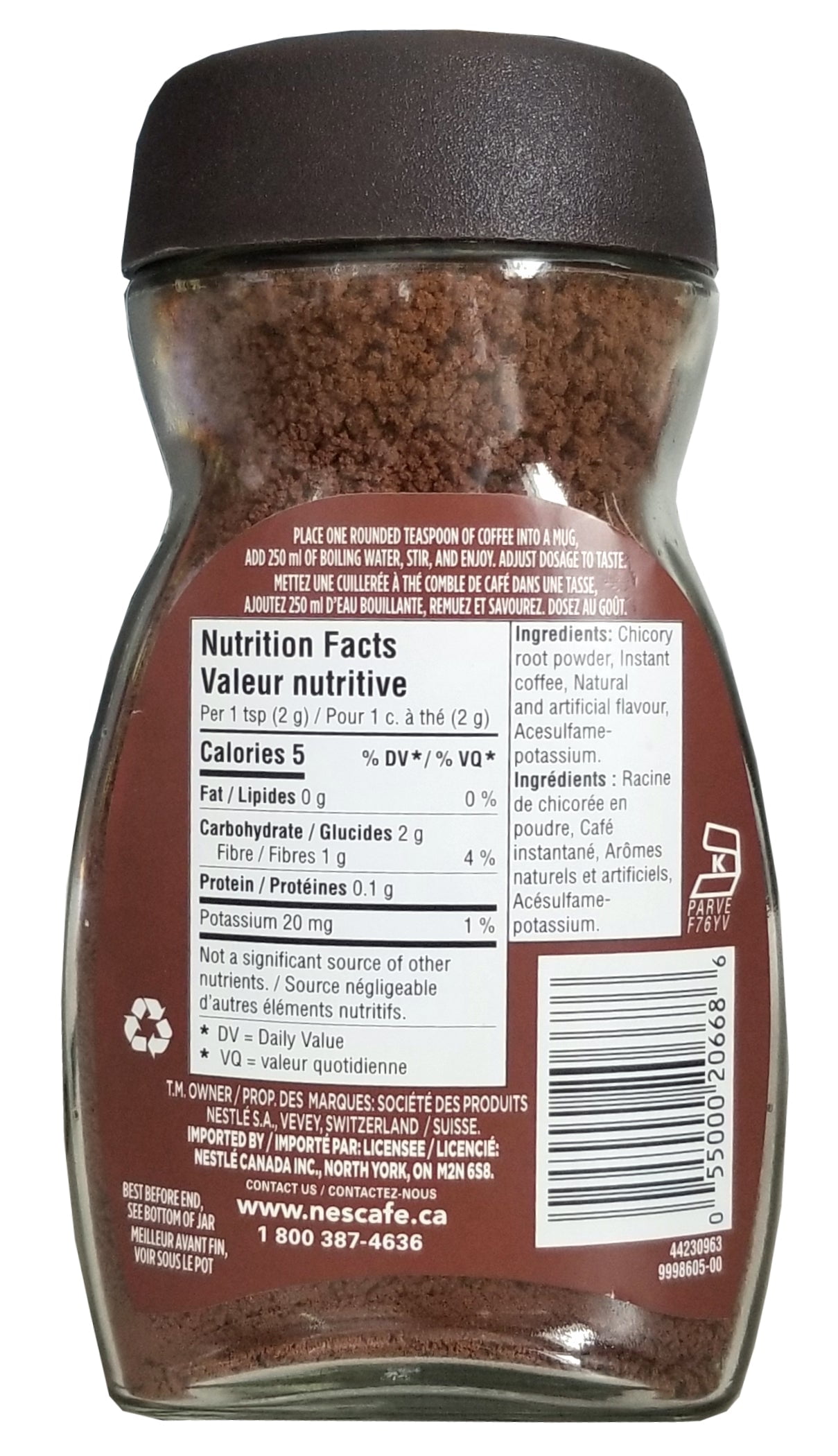As an Amazon Associate CoffeeXplore.com earns from qualifying purchases.
Calories in Instant Coffee: Powder vs. Prepared Cup
Curious if your daily cup of instant coffee is impacting your calorie count? You’re not alone. Many people wonder if this quick and convenient beverage is truly a “free” drink in their diet, or if hidden calories are lurking in the powder. The confusion only grows when you start thinking about adding a splash of milk or a spoonful of sugar.
Yes, a standard cup of black instant coffee prepared with only water contains a minimal amount of calories, typically ranging from 4 to 7 kcal.
This guide will eliminate the guesswork. Leveraging a detailed analysis of nutritional data from sources like the USDA and Healthline, we’ll break down exactly where the calories in instant coffee come from. You’ll learn the difference between the powder and the prepared cup, see how add-ins can dramatically change the numbers, and discover the surprising nutritional benefits packed into this simple drink.
Key Facts
- Black Instant Coffee is Extremely Low-Calorie: A standard prepared cup contains just 4 to 7 calories, making it a diet-friendly choice on its own.
- The Calories Are in the Powder: A single rounded teaspoon of dry instant coffee powder contains about 4 calories, as confirmed by USDA data. Since it’s mixed with zero-calorie water, the calories in your black coffee come entirely from the powder itself.
- Add-Ins Are the Real Calorie Source: The most significant jump in calories comes from what you add. As an example, two tablespoons of white sugar can add nearly 100 calories to your drink.
- It Contains Beneficial Compounds: Beyond its low calorie count, instant coffee is a significant source of antioxidants. As reported by Healthline, the processing method may even result in higher levels of certain antioxidants compared to regular brewed coffee.
- 3-in-1 Mixes Are Different: Pre-packaged 3-in-1 instant coffee products contain coffee, creamer, and sugar, making them substantially higher in calories than plain instant coffee powder.
How Many Calories Are In Instant Coffee? The Definitive Guide for 2025
Yes, a standard cup of black instant coffee prepared with only water contains a minimal amount of calories, typically ranging from 4 to 7 kcal. This incredibly low number is why many consider it a “nearly zero calorie” beverage, perfect for those monitoring their energy intake. The actual calories come from the small amounts of trace fats, proteins, and carbohydrates that are naturally present in the coffee bean and remain after the manufacturing process.
According to data from authoritative sources like the USDA and Healthline, the consensus is clear: a plain cup of instant coffee is not going to derail your diet. One source indicates a prepared cup has 4 calories, while another places it closer to 7. This minor variation depends on the specific brand and the exact serving size.
But is that the whole story? The number on the label might be small, but the final count in your mug can change dramatically.
Understanding the Numbers: Powder vs. a Prepared Cup
One teaspoon of dry instant coffee powder has about 4 calories. Since it’s prepared with water (0 calories), a standard cup of black instant coffee contains a similar amount, roughly 4 to 7 calories.
This is a critical point of confusion for many people. The key is to understand that the caloric content originates entirely from the coffee powder itself. Water, the primary ingredient in a prepared cup, adds volume and temperature but contributes zero calories, fats, carbs, or proteins. Therefore, the calories in your finished black coffee are identical to the calories in the spoonful of powder you started with.
To make it crystal clear, here’s a direct comparison based on available nutritional data:
| Form | Serving Size | Typical Calories (kcal) | Source Note |
|---|---|---|---|
| Dry Instant Coffee Powder | 1 rounded tsp (~2g) | ~4 kcal | Based on USDA data |
| Prepared Black Coffee | 1 standard cup (~6 fl oz) | 4 – 7 kcal | Based on Healthline/MyFoodData |
Pro Tip: Remember, since water adds zero calories, the calories in your cup of black instant coffee come entirely from the powder itself.
The Real Calorie Culprits: How Add-Ins Impact Your Coffee
While black instant coffee is very low in calories, adding milk, sugar, creamers, or syrups is the primary reason for a high calorie count in a coffee beverage. The moment you move beyond just coffee powder and water, you begin to add new sources of energy—namely fats, carbohydrates, and proteins—which all contribute to the final tally.
Think of your black instant coffee as a blank canvas. It’s the ‘paints’ you add—the milk, sugar, and syrups—that determine the final picture. A simple black coffee is a minimalist sketch, but a sweetened, creamy latte is a full-blown oil painting in terms of caloric density.
Here’s how the most common additions can transform your nearly-zero-calorie drink into a substantial snack or even a dessert:
* Milk and Creamers: These add creaminess but also fat and sugar (in the form of lactose). A simple splash might only add 10-20 calories, but creating a latte-style drink can add over 100.
* Sugar and Syrups: This is pure carbohydrate energy. As data shows, just two tablespoons of white sugar pack a surprising 98 kcal. Flavored syrups are often even more calorically dense.
* Pre-Mixed Sachets: Products like “3-in-1” mixes already contain coffee, creamer, and sugar, and their calorie counts reflect that convenience.
* Specialty Preparations: Trendy drinks like Dalgona (whipped) coffee, which require significant amounts of sugar and milk, can easily contain over 200 calories per serving.
How Milk and Creamers Add Up
Adding cow’s milk can increase calories significantly (e.g., a latte has ~103 kcal), while flavored creamers also add a considerable amount. This is where a 4-calorie drink begins its transformation. The type of milk and the quantity used are the two biggest factors.
- A Splash of Milk: A small splash of whole milk might add 10-15 calories, while skim milk would add slightly less.
- Coffee with Milk: A standard coffee with a larger amount of steamed milk, like a cappuccino, can contain around 65 calories.
- Latte-Style Drinks: A beverage where milk is the primary ingredient, such as a latte, can easily surpass 100 calories. Data shows a typical latte contains about 103 kcal.
- Flavored Creamers: These often contain sugar and oils in addition to dairy or non-dairy ingredients, and their calorie counts can be surprisingly high per tablespoon.
Quick Fact: Did you know? A coffee with steamed milk and foam, like a latte, can have over 100 calories, turning your low-calorie drink into a substantial snack.

The Impact of Sugar and Syrups
Sugar is a major source of calories in coffee; just two tablespoons of white sugar can add nearly 100 calories to your cup. Sweeteners are perhaps the most deceptive source of calories because they dissolve completely, leaving no visual trace of the energy they’ve added.
According to nutritional data, the impact of sugar is stark. Adding two tablespoons of granulated white sugar to your coffee introduces approximately 98 calories. This single act can take your 4-calorie drink and turn it into a 102-calorie beverage, a 25-fold increase.
Other common sweeteners like honey, maple syrup, or flavored coffee syrups (like vanilla or caramel) contribute a similar or even higher number of calories per serving. If you’re looking to keep your coffee low-calorie, managing sugar is the most important step.
Special Case: 3-in-1 Instant Coffee Mixes
3-in-1 instant coffee mixes contain coffee, creamer, and sugar in one packet, making them significantly higher in calories than a cup of black instant coffee. These products are designed for ultimate convenience, but that convenience comes at a caloric cost.
Instead of controlling the ingredients yourself, you are getting a pre-determined ratio that is almost always sweetened and whitened.
* The Components: These sachets combine instant coffee powder with a powdered non-dairy creamer (which contains fats and sugars) and a significant amount of granulated sugar.
* The Caloric Difference: While a cup of black instant coffee has 4-7 calories, a single serving of a 3-in-1 mix can range from 60 to over 100 calories, depending on the brand and specific formulation.
* What to Look For: The ingredients list will clearly show sugar and creamer solids (like corn syrup solids or hydrogenated oils) listed high up, indicating they are major components by weight.
Pro Tip: Always check the nutrition label on 3-in-1 coffee mixes. The convenience comes at a cost, as they pre-package the sugar and creamer for you.
Beyond Calories: The Nutritional Profile of Instant Coffee
Beyond its low calorie count, instant coffee is a significant source of antioxidants and contains small amounts of potassium, magnesium, and niacin (vitamin B3). While we often focus solely on what to avoid (calories), it’s equally important to recognize the beneficial compounds that instant coffee provides.
The nutritional value of a standard cup of black instant coffee extends beyond its energy content. Here’s what else you’re getting in your mug:
* Potent Antioxidants: Coffee is one of the biggest sources of antioxidants in the modern diet. These compounds, such as polyphenols, help fight free radicals in the body.
* Essential Minerals: A single cup provides small but meaningful amounts of key minerals. This includes potassium, which is vital for fluid balance and nerve signals, and magnesium, which is involved in hundreds of biochemical reactions in the body.
* B Vitamins: Instant coffee contains Niacin, also known as vitamin B3, which is important for converting food into energy.
Quick Fact: Surprisingly, some studies suggest the way instant coffee is processed may lead to even higher levels of certain antioxidants compared to regular brewed coffee!

To ensure you’re starting with a high-quality, flavorful base for your low-calorie drink, exploring different types of instant coffee can make all the difference.
FAQs About Calories in Instant Coffee
Here are direct answers to some of the most common questions people have about the calories in their instant coffee.
How many calories are in a spoonful of instant coffee?
A single rounded teaspoon of regular instant coffee powder contains approximately 4 calories. This figure is based on data provided by the USDA and cited by institutions like University Hospitals. This is the baseline number before you add water or any other ingredients.
Does Nescafé instant coffee have calories?
Yes, Nescafé instant coffee has calories, but the amount is very low. The exact number can vary slightly by product line. For example, some Nescafé products report as little as 1 calorie per mug when prepared with just water, while others, like their classic blends, contain closer to 5 calories per teaspoon of powder. It always remains in the minimal, single-digit range for a black cup.
Why do some people say coffee has zero calories?
Black coffee is often called “zero calorie” because its actual calorie count (around 4-7 kcal per cup) is so low that it’s considered nutritionally insignificant for most dietary tracking purposes. Calories come from macronutrients like fats, proteins, and carbohydrates. As one analysis puts it, coffee doesn’t have enough of these on its own to really count. So, while not technically zero, it’s close enough that it doesn’t meaningfully impact a person’s daily energy intake.
Can I drink instant coffee while fasting?
Because black instant coffee contains very few calories (under 10), most people consider it acceptable to drink during a fasting window without breaking the fast. The core principle of most fasts is to avoid a significant caloric intake that would trigger a metabolic response. The 4-7 calories in a cup of black coffee are generally considered too low to do this. However, it is crucial to remember that this only applies to black coffee. Adding any sugar, milk, or creamer will add substantial calories and will definitely break your fast.
Final Summary: What to Remember About Instant Coffee Calories
You can now confidently enjoy your daily instant coffee, armed with the precise knowledge of where its calories come from. The key takeaway is that the drink in its purest form—just powder and water—is a fantastic, nearly zero-calorie option suitable for almost any diet.
The power to control the final calorie count rests entirely in your hands. It’s not the coffee itself you need to watch, but the additions that accompany it.
Here are the most important points to remember:
* A cup of black instant coffee contains a negligible 4-7 calories.
* The calories come from the powder, not the water. A teaspoon of powder has about 4 calories.
* The real calorie culprits are add-ins. Sugar, milk, and creamers can add over 100 calories to your cup.
* 3-in-1 mixes are pre-loaded with sugar and creamer and are much higher in calories.
Now you can confidently enjoy your instant coffee, knowing exactly where the calories come from and how to manage them
Last update on 2025-12-12 / Affiliate links / Images from Amazon Product Advertising API

